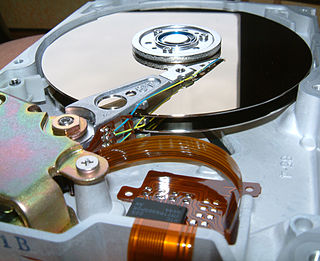 | |
| Subject | Automation |
|---|---|
| Publisher | Portfolio Hardcover |
Publication date | 30 August 2012 |
| ISBN | 978-1-59184-492-1 |
| OCLC | 757470260 |
Automate This: How Algorithms Came to Rule Our World is a book written by Christopher Steiner [1] and published by Penguin Group.
 | |
| Subject | Automation |
|---|---|
| Publisher | Portfolio Hardcover |
Publication date | 30 August 2012 |
| ISBN | 978-1-59184-492-1 |
| OCLC | 757470260 |
Automate This: How Algorithms Came to Rule Our World is a book written by Christopher Steiner [1] and published by Penguin Group.
Steiner begins his study of algorithms on Wall Street in the 1980s [2] but also provides examples from other industries. For example, he explains the history of Pandora Radio and the use of algorithms in music identification. He expresses concern that such use of algorithms may lead to the homogenization of music over time. [3] Steiner also discusses the algorithms that eLoyalty (now owned by Mattersight Corporation following divestiture of the technology) was created by dissecting 2 million speech patterns and can now identify a caller's personality style and direct the caller with a compatible customer support representative. [4]
Steiner's book shares both the warning and the opportunity that algorithms bring to just about every industry in the world, and the pros and cons of the societal impact of automation (e.g. impact on employment). [2] [3] [4]

A call centre or call center is a managed capability that can be centralised or remote that is used for receiving or transmitting a large volume of enquiries by telephone. An inbound call centre is operated by a company to administer incoming product or service support or information inquiries from consumers. Outbound call centres are usually operated for sales purposes such as telemarketing, for solicitation of charitable or political donations, debt collection, market research, emergency notifications, and urgent/critical needs blood banks. A contact centre is a further extension of call centres telephony based capabilities, administers centralised handling of individual communications, including letters, faxes, live support software, social media, instant message, and email.

In mass communication, digital media is any communication media that operates in conjunction with various encoded machine-readable data formats. Digital content can be created, viewed, distributed, modified, listened to, and preserved on a digital electronic device, including digital data storage media and digital broadcasting. Digital is defined as any data represented by a series of digits, and media refers to methods of broadcasting or communicating this information. Together, digital media refers to mediums of digitized information broadcast through a screen and/or a speaker. This also includes text, audio, video, and graphics that are transmitted over the internet for viewing or listening to on the internet.

Automation describes a wide range of technologies that reduce human intervention in processes, mainly by predetermining decision criteria, subprocess relationships, and related actions, as well as embodying those predeterminations in machines. Automation has been achieved by various means including mechanical, hydraulic, pneumatic, electrical, electronic devices, and computers, usually in combination. Complicated systems, such as modern factories, airplanes, and ships typically use combinations of all of these techniques. The benefit of automation includes labor savings, reducing waste, savings in electricity costs, savings in material costs, and improvements to quality, accuracy, and precision.
Machine learning (ML) is a field of study in artificial intelligence concerned with the development and study of statistical algorithms that can learn from data and generalize to unseen data and thus perform tasks without explicit instructions. Recently, artificial neural networks have been able to surpass many previous approaches in performance.
Blair Hull is an American businessman, investor, and Democratic politician.
Adult FriendFinder(AFF) is an internet-based, adult-oriented social networking service, online dating service and swinger personals community website, founded by Andrew Conru in 1996.
Algorithmic trading is a method of executing orders using automated pre-programmed trading instructions accounting for variables such as time, price, and volume. This type of trading attempts to leverage the speed and computational resources of computers relative to human traders. In the twenty-first century, algorithmic trading has been gaining traction with both retail and institutional traders. A study in 2019 showed that around 92% of trading in the Forex market was performed by trading algorithms rather than humans.
An automated trading system (ATS), a subset of algorithmic trading, uses a computer program to create buy and sell orders and automatically submits the orders to a market center or exchange. The computer program will automatically generate orders based on predefined set of rules using a trading strategy which is based on technical analysis, advanced statistical and mathematical computations or input from other electronic sources.

The International Standard Name Identifier (ISNI) is an identifier system for uniquely identifying the public identities of contributors to media content such as books, television programmes, and newspaper articles. Such an identifier consists of 16 digits. It can optionally be displayed as divided into four blocks.
High-frequency trading (HFT) is a type of algorithmic trading in finance characterized by high speeds, high turnover rates, and high order-to-trade ratios that leverages high-frequency financial data and electronic trading tools. While there is no single definition of HFT, among its key attributes are highly sophisticated algorithms, co-location, and very short-term investment horizons in trading securities. HFT uses proprietary trading strategies carried out by computers to move in and out of positions in seconds or fractions of a second.

HP Newquist is an American author whose books cover topics from medicine and music to technology and terror. He is also a museum curator and musician, and has worked as a columnist, publisher, industry analyst, and video director.
Phone hacking is the practice of exploring a mobile device, often using computer exploits to analyze everything from the lowest memory and CPU levels up to the highest file system and process levels. Modern open source tooling has become fairly sophisticated to be able to "hook" into individual functions within any running app on an unlocked device and allow deep inspection and modification of its functions.
Perry J. Kaufman is an American systematic trader, rocket scientist, index developer, and quantitative financial theorist. He is considered a leading expert in the development of fully algorithmic trading programs.

Googled: The End of the World as We Know It is a book published in 2009 by American writer, journalist and media critic Ken Auletta. It examines the evolution of Google as a company, its philosophy, business ethics, future plans and impact on society, the world of business and the Internet.

Beats Music was a subscription-based music streaming service owned by the Beats Electronics division of Apple Inc. The service combined algorithmic personalization with curated music suggestions.

Interactive Brokers, Inc. (IB), headquartered in Greenwich, Connecticut, is an American multinational brokerage firm. It operates the largest electronic trading platform in the United States by number of daily average revenue trades - in 2023, it processed an average of 3 million trades per trading day. The company brokers stocks, options, futures contracts, EFPs, futures options, forex, bonds, mutual funds, and cryptocurrency. It offers omnibus and non-disclosed broker accounts and provides clearing services to 200 introducing brokers worldwide. It has operations in 34 countries and 27 currencies and has 2.6 million institutional and individual brokerage customers, with total customer equity of $426 billion as of December 31, 2023.
Christopher Cerrone is an American composer based in New York City. He was a 2014 finalist for the Pulitzer Prize, a 2014 Fromm Foundation commission recipient, a 2015 Rome Prize winner in Music Composition, and has received numerous awards from ASCAP.
Spoofing is a disruptive algorithmic trading activity employed by traders to outpace other market participants and to manipulate markets. Spoofers feign interest in trading futures, stocks, and other products in financial markets creating an illusion of the demand and supply of the traded asset. In an order driven market, spoofers post a relatively large number of limit orders on one side of the limit order book to make other market participants believe that there is pressure to sell or to buy the asset.
Automated journalism, also known as algorithmic journalism or robot journalism, is a term that attempts to describe modern technological processes that have infiltrated the journalistic profession, such as news articles and videos generated by computer programs. There are four main fields of application for automated journalism, namely automated content production, Data Mining, news dissemination and content optimization. Through artificial intelligence (AI) software, stories are produced automatically by computers rather than human reporters. These programs interpret, organize, and present data in human-readable ways. Typically, the process involves an algorithm that scans large amounts of provided data, selects from an assortment of pre-programmed article structures, orders key points, and inserts details such as names, places, amounts, rankings, statistics, and other figures. The output can also be customized to fit a certain voice, tone, or style.

Julia Angwin is an American investigative journalist, author, and entrepreneur. She co-founded and was editor-in-chief of The Markup, a nonprofit newsroom that investigates the impact of technology on society. She was a staff reporter at the New York bureau of The Wall Street Journal from 2000 to 2013, during which time she was on a team that won the Pulitzer Prize in journalism. She worked as a senior reporter at ProPublica from 2014 to April 2018, during which time she was a finalist for the Pulitzer Prize.